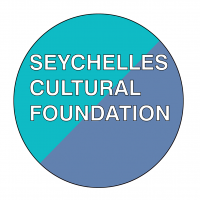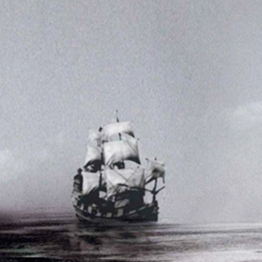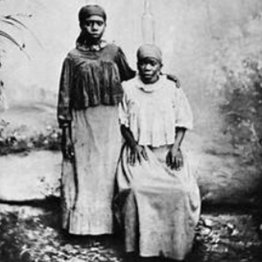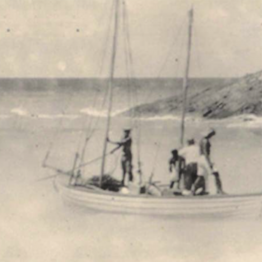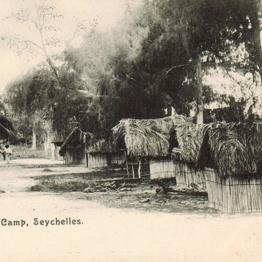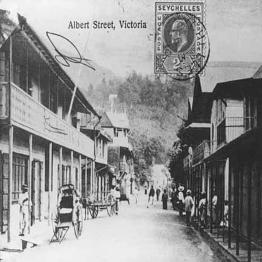HISTORY OF SEYCHELLES
Some historians believe that the islands of Seychelles were first discovered by Arab sailors in the 12th century. History has it those Arab manuscripts from this period record ‘high islands’ beyond the Maldives while Persian manuscripts appear to refer to them as the ‘golden isles’.
Later in the 16th century, Portuguese navigators referred vaguely to a group of islands as the ‘seven sisters’. Vasco de Gama took a short cut from Mozambique to India and, in so doing, sailed past previously unrecorded islands. These were later recorded on Portuguese manuscripts as “Almirante’ – the Admirals islands.
Today they are still called the Amirantes. It was not until 1609 that we have the first recorded discovery and landing of islands in the main Seychelles group.
An English expedition came across a mountainous group of islands they mistook for the Amirantes, but it is clear from their account that these were part of the main Seychelles group, which they described as ‘some earthly paradise’. It was not until November 1742, 130 years later, that two French ships under the command of Lazare Picault, sailed into the waters of a small bay on the south-west of Mahe.
Island was renamed as ‘Island of Plenty’
The ships were a thousand miles off course on a voyage of discovery. After landing, Picault remarked that the main island should be named the ‘Island of Plenty’ for his sailors found an abundance of freshwater, fruit, fish and birds.
After four days the ships sailed on, laden down with 33 tortoises and 600 coconuts. The French Governor of Isle de France (as Mauritius was called then), Mahe de la Bourdonnais, expressed an interest in these islands, and dispatched Lazare Picault to find, chart and claim the islands for France. In May 1744 Picault anchored off the north-eastern coast in the area that was to become the first French settlement. He named it Port Royale and the island was named after his Governor, Mahe.
However, any planned settlement of the island was not to be. Seychelles was left undisturbed and half-forgotten while the war between England and France dragged on throughout the Colonies. It was not until 1756 that French tricolour was raised, a stone of possession laid and the island claimed for France. There it was promptly forgotten for a further 12 years.
The first settlers to arrive in Seychelles landed on the island of St Anne in 1770. Records note there were 27 men and 1 woman. They included a doctor, a carpenter and seven slaves. This new colony aimed to exploit the resources of timber and tortoises and to use the islands as a staging post for shipping slaves between Africa and Isle de France. Shortly afterwards a second colony was established in the south of Mahe to produce spices.
The first few years of these colonies were hard times. The harvests failed, the settlers faced starvation and their commanders lost control. The grandly
named Jardin du Roi spice garden project ended in a fiasco. In May 1780, a ship was sighted from Mahe, believing it to be English and not wanting the garden to fall into enemy hands, the gardens were burnt to the ground. When the ship sailed closer it was discovered to be French after all. But by then it was too late; the gardens and the spices, save a cinnamon tree or two, were completely destroyed. Other man-made destructions occurred in those early years: the tortoise population on Mahe decimated with many hundreds of tortoises shipped to Isle de France or eaten by the settlers. By 1778 they were almost completely wiped out on Mahe. The endemic Seychelles crocodile was also hunted to extinction as were several species of birds.
The impact of Fresh revolution on Seychelles
The year 1789 saw the start of the French Revolution. The colony in Seychelles at this time consisted of 69 French, including three soldiers, 32 free ‘coloureds’ and 487 slavers. In 1790 the French community, fired by the new spirit of revolution, set up their own Assembly and Committee, announcing independence from the Isle de France. But the newly independent colony did not last long.
Interesting Read: Seychelles Flag History.
One by one the great declarations of independence were dropped, particularly the abolition of slavery, which was not at all popular with the colonists. Eventually, it was agreed that the powers of the committee should be given to a new commandant who would be able to govern more effectively. The new commandant was a popular choice: Captain Queau de Quinssy (later spelt Quincy). He was not only the longest-serving Governor of the colony but also achieved the most during the long-troubled years of the Napoleonic Wars. During the wars, the islands changed hands between the French and the English several times, and it was Quincy who repeatedly capitulated to avoid bloodshed. It was soon agreed that Seychelles should be a neutral port to the English and the French and so the settlers avoided the conflicts and blockades that other Indian Ocean ports suffered. This also suited the many French corsairs who were sailing the Indian Ocean plundering enemy ships: Mahe became a popular port of call for many of the most notorious corsairs of the day.
The British fought for Seychelles and Isle de France because both island nations were strategic points in the route between India and the Cape and because the corsairs were a menace. In 1810, after a long blockade, Isle de France capitulated and the British renamed it Mauritius. That Seychelles would become British property was now guaranteed and duly occurred in 1814. Quincy remained in office under British rule and died on Mahe in 1827 at the age of 79. He was buried with full honours near Government House, where his impressive grave still stands today.
During the British colonial period, Seychelles gained roads, schools, churches and a hospital. By 1900 the population had grown to 7,000 and in 1903 Seychelles became a crown colony in its own right, separate at last from Mauritius. The British Governor commemorated the event by erecting a clock tower in the center of Victoria, a replica of the clock tower outside the Victoria railway station in London.
Seychelles history and culture
Although a British colony, the culture of Seychelles remained steadfast French. British Governors did attempt to Anglicize the islands, but with little success: customs and language did not alter much during the British colonial era, giving rise to the popular observation that Seychelles was “half-British but fully-French”.
It was during the Second World War that the beginnings of political change began to stir in Seychelles and shortly afterwards universal adult suffrage was granted. In 1962 two political parties were formed under the leadership of two lawyers who were to remain the main political figureheads for the rest of the century: France Albert Rene and James Mancham. Independence from Britain was gained in 1976, and today Seychelles is a Republic within British Commonwealth under the leadership of President Danny Rollen Faure.

